They technically won’t start a nearly yearlong research project until July 1, but an MTSU biology researcher and a University Honors College student already are off and running on a mission to collect DNA from water in the expansive Stones River Watershed.
Research assistant professor Cole Easson and rising senior Jacqueline Williams not only have charted their strategy, but ventured recently — with map, collection bottles and other equipment — to Walter Hill Dam and many of the 10 locations where they will check water quality during the fall and winter.
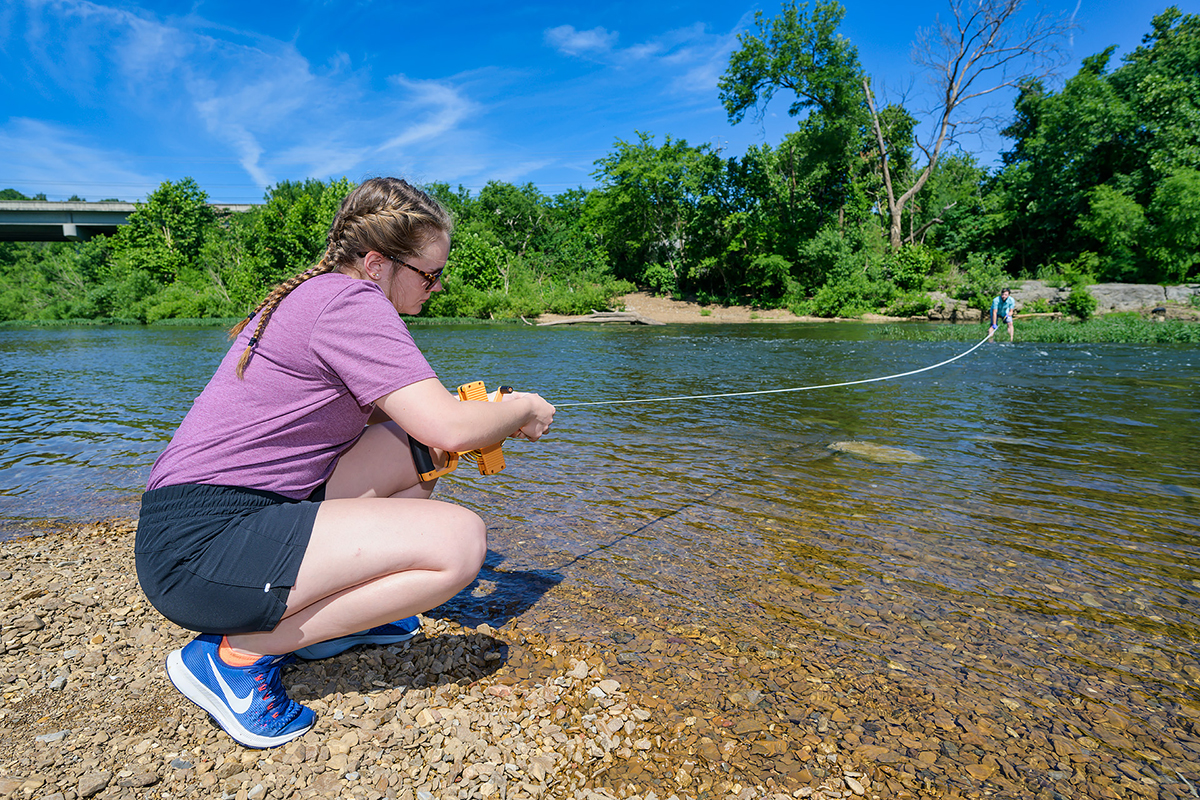
Rising senior Jacqueline Williams, left, of Drummonds, Tenn., holds one end of the tape and research assistant professor Cole Easson the other as they measure a portion of the Stones River recently. In a Stones River Watershed research project, they will collect DNA samples from 10 locations across the area. The Stones River Watershed Association and a campus committee chose the Easson-Williams proposal for a $6,500 stipend. (MTSU photo by Andy Heidt)
They will map aquatic diversity using next-generation sequencing techniques relative to land use in the surface waters in the river.
The Stones River Watershed Association and a campus committee chose the Easson-Williams proposal that included a $6,500 stipend. Outgoing MTSU College of Basic and Applied Sciences Dean Bud Fischer informed them of the selection, saying he “looks forward to seeing the results from this research.”
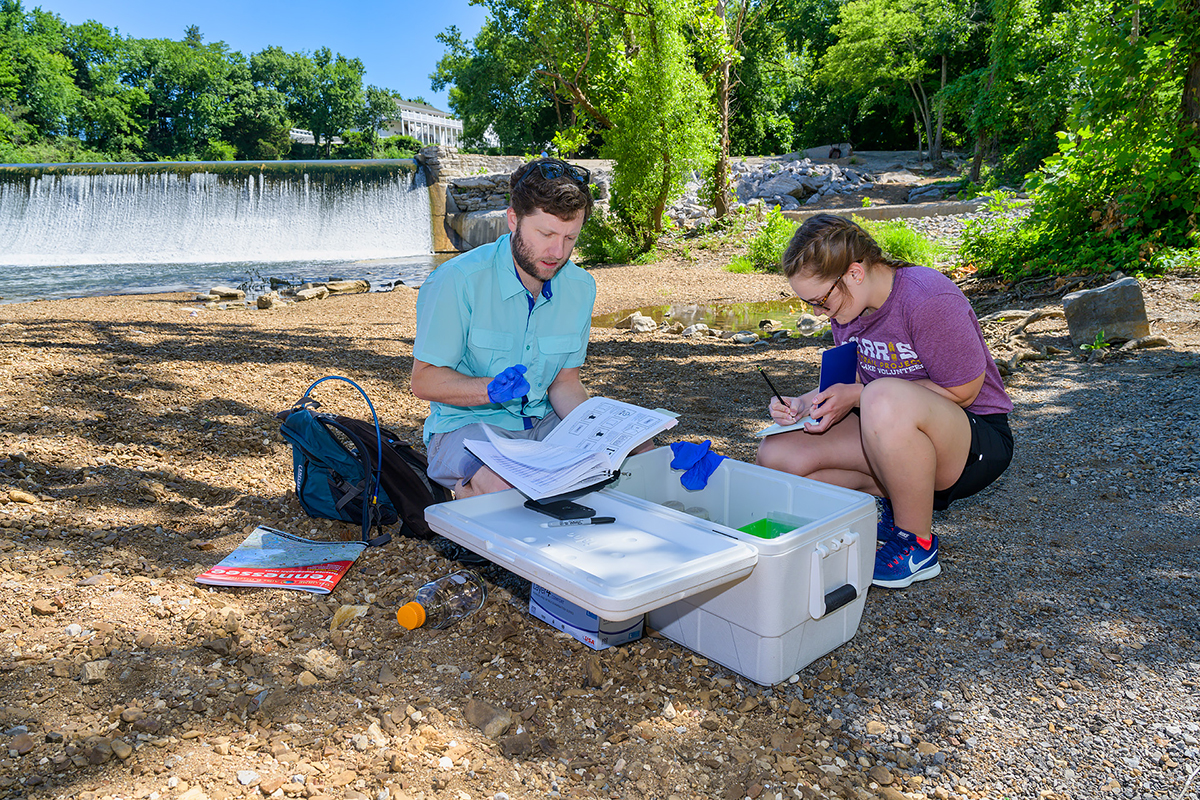
MTSU biology research assistant professor Cole Easson, left, and rising senior Jacqueline Williams of Drummonds, Tenn., check the reading a special pump that will provide data from their Stones River Watershed project that officially begins July 1 and ends next spring when Williams writes her Honors College thesis and presents at one or more conferences. They will map aquatic diversity using next-generation sequencing techniques relative to land use in the surface waters in the river. (MTSU photo by Andy Heidt)
Old Fort Parkway, Barfield Park, Nice’s Mill, Readyville Mill, Fall Creek and Stewarts Creek are among the river locations they will investigate.
 “In addition to sampling the diversity in the stream with the water filtration, we want to monitor the water chemistry and Jaci’s going to map land use in the watershed and see if that correlates with diversity,” said Easson, an MTSU faculty member since 2018 who has ongoing coral reef research in the Florida Keys.
“In addition to sampling the diversity in the stream with the water filtration, we want to monitor the water chemistry and Jaci’s going to map land use in the watershed and see if that correlates with diversity,” said Easson, an MTSU faculty member since 2018 who has ongoing coral reef research in the Florida Keys.
“Does the water chemistry and the land use sync up with what we see in diversity?” he added. “… We’re sampling across the watershed to get a nice view of these parameters at different spots.”
An Honors Transfer Fellow from Dyersburg State Community College, Williams, 22, of Drummonds, Tennessee, near Brighton, said “what we’re doing is really cool. I am an organismal biology and ecology student. This combines both really nicely because we are doing a biodiversity survey and it’s in the watershed, which gives us experience in the field and in the lab.”
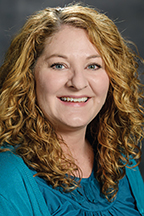
Cynthia Allen
Williams will write her honors thesis about the project and must present the research at Scholars Day, the Tennessee Academy of Science or another similar event.
Cynthia Allen, environmental specialist in MTSU’s Environmental Health and Safety Services, said this is Stones River Watershed Association’s first research stipend to benefit the MTSU campus and “has pledged to contribute $6,500 annually toward research at MTSU as funding allows from member donations.”
“The association is an all-volunteer organization, so donations go directly to local efforts which also supports the protection efforts that benefit streams and aquatic wildlife in our local stormwater jurisdictions,” Allen said.
— Randy Weiler (Randy.Weiler@mtsu.edu)
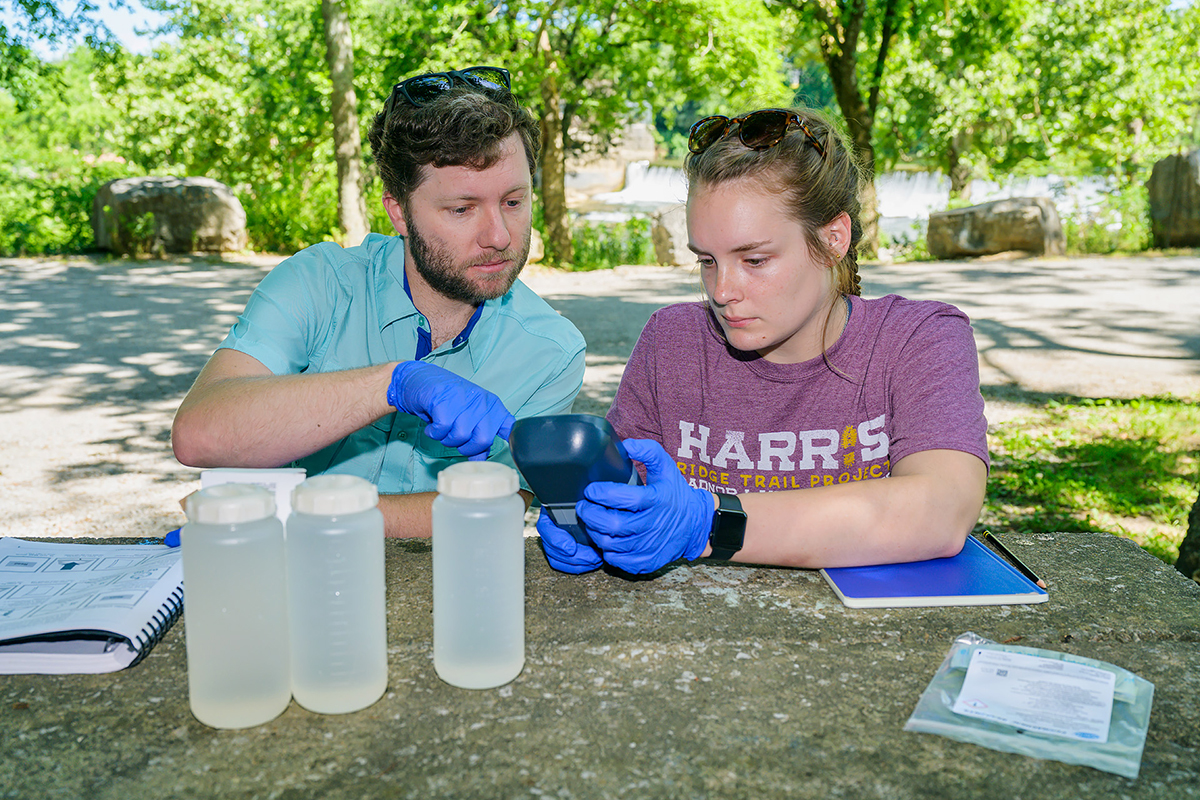
MTSU biology research assistant professor Cole Easson, left, and rising senior Jacqueline Williams of Drummonds, Tenn., check the reading a special pump that will provide data from their Stones River Watershed project that officially begins July 1 and ends next spring when Williams writes her Honors College thesis and presents at one or more conferences. They will map aquatic diversity using next-generation sequencing techniques relative to land use in the surface waters in the river. (MTSU photo by Andy Heidt)
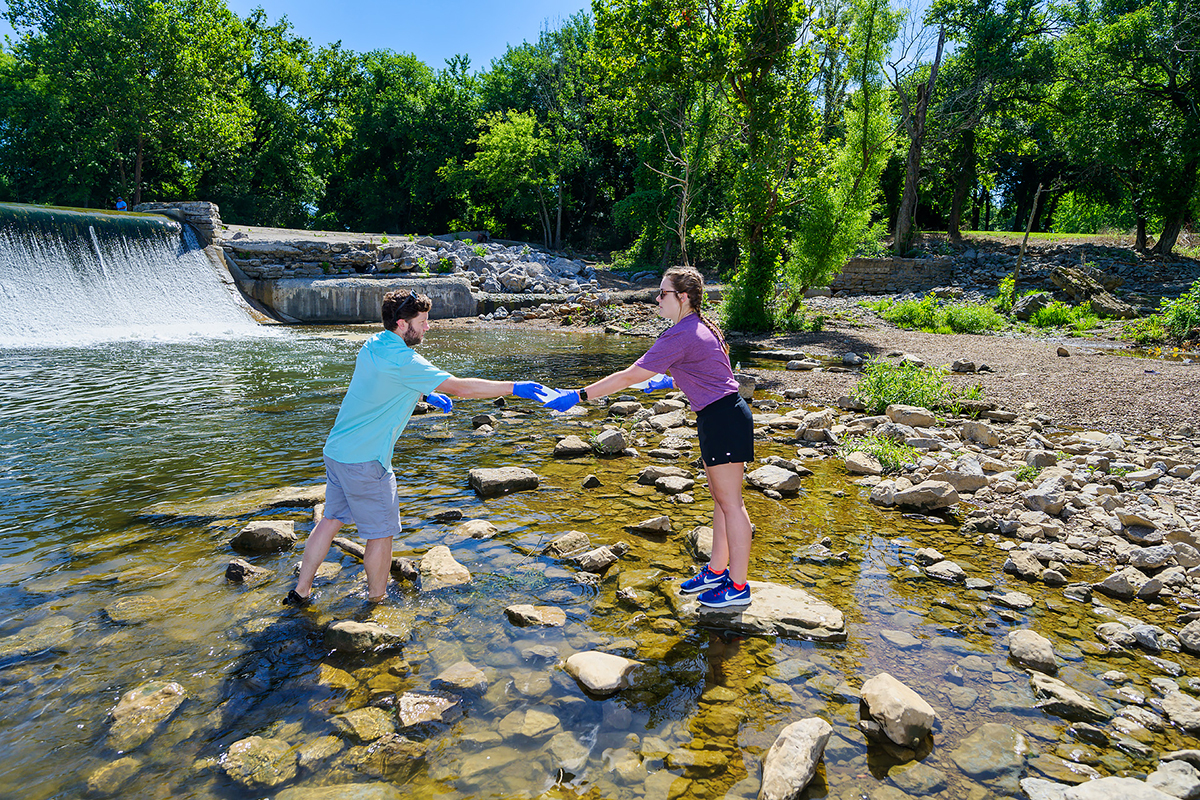
MTSU biology research assistant professor Cole Easson, left, hands rising senior Jacqueline Williams of Drummonds, Tenn., a plastic bottle of water he took from the Stones River at the Walter Hill Dam in Murfreesboro. They will map aquatic diversity using next-generation sequencing techniques relative to land use in the surface waters in the river at 10 locations across the area. (MTSU photo by Andy Heidt)

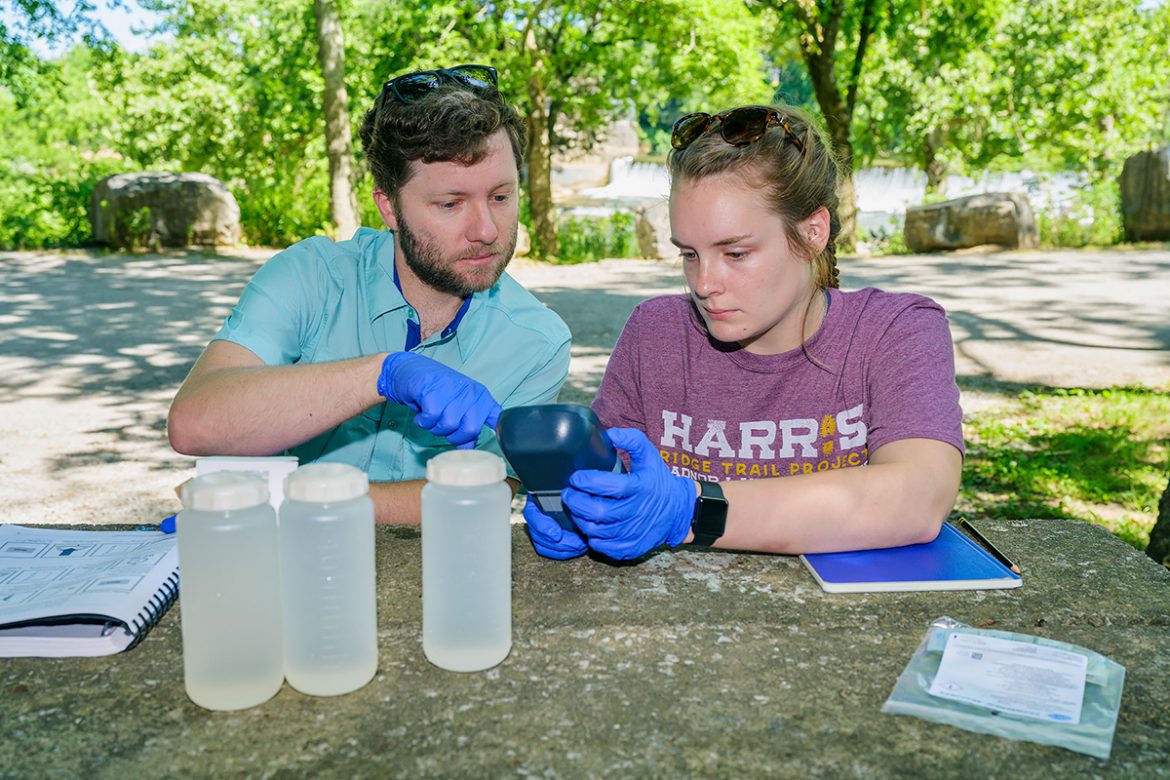
COMMENTS ARE OFF THIS POST